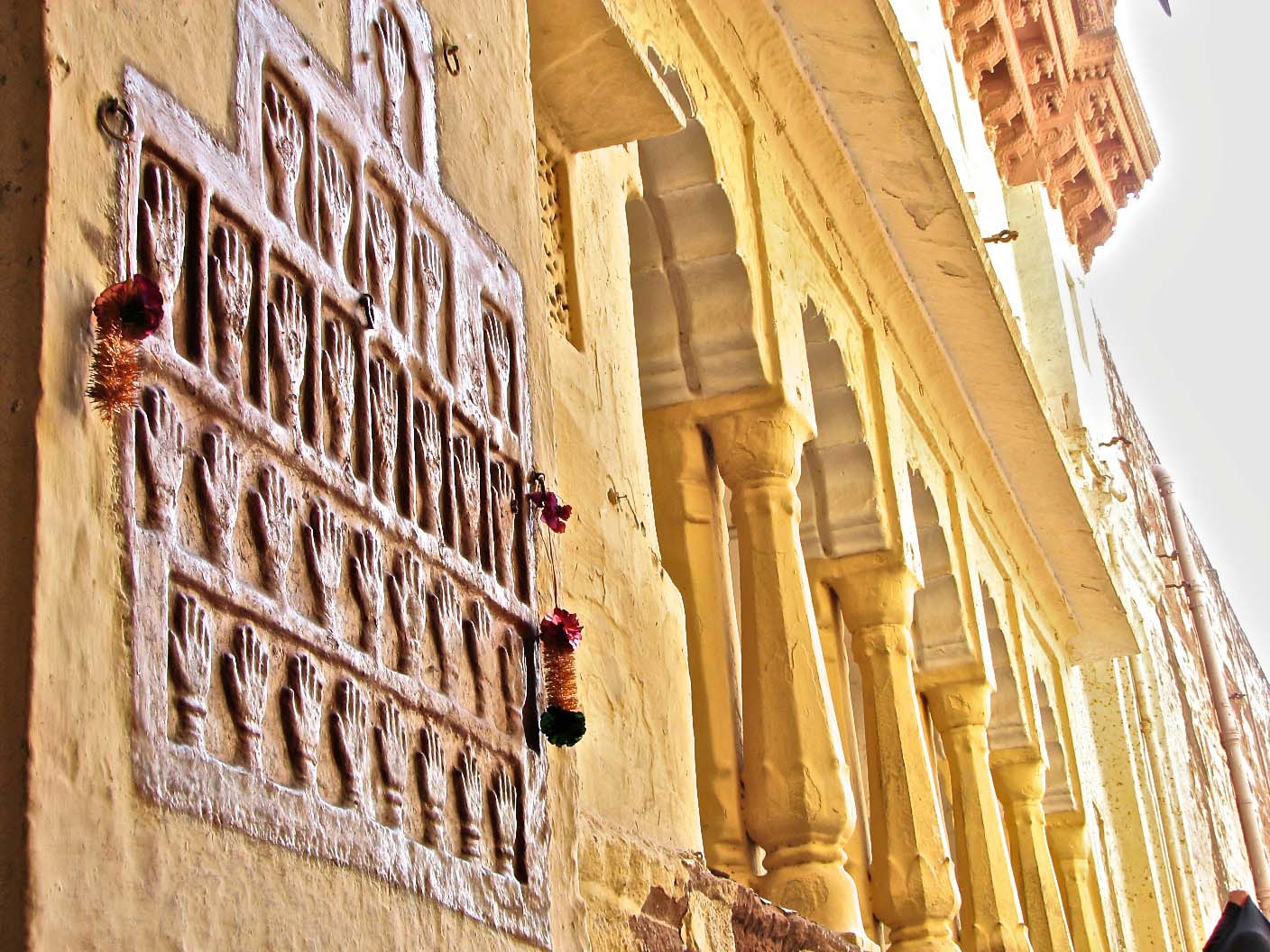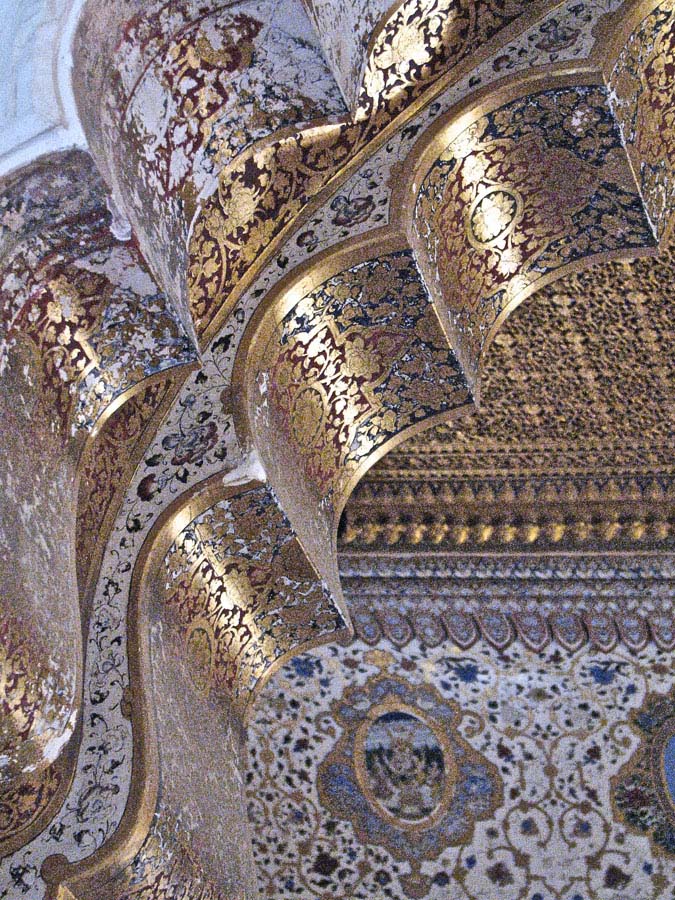Fortress town of Rajasthan
Jodhpur is one of the old fortress towns of Rajasthan, the western state of India that borders Pakistan. Rajasthan itself is a place of great beauty, many of the iconic Indian images of elaborately turbaned men and colourful bejewelled women come from Rajasthan. No wonder it’s high on the tourist list of must-see places. In the age of Maharajas, all these towns had their own Maharaja or Maharana. Some are still there but without the power they once had.

Jodhpur is an overnight train ride from Delhi - or an hour’s flight, it depends on your schedule! As a place to visit it’s much smaller and quieter than nearby Jaipur (the halfway town between Jodhpur and Delhi) and although there are a well known few rascals in the market it’s far more relaxing. The people are proud of their town and tend to stay there, there’s good education and one of the best universities in India. There’s a lot to like. Rajasthan’s a desert and winter’s the best time to go (though in December the nights are cold), from April onwards it starts to get unbearably hot.
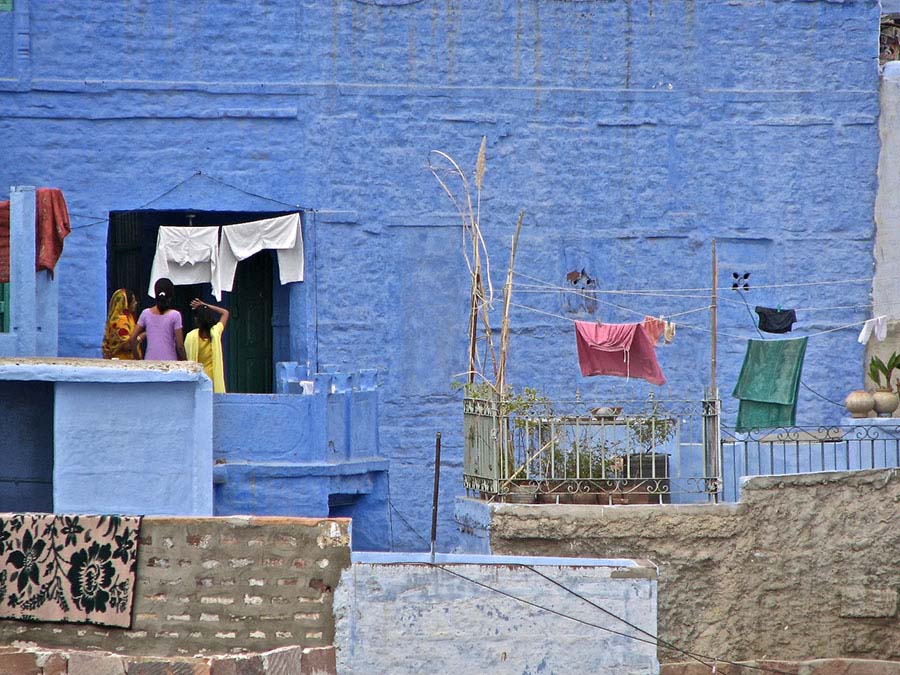

What is there to see and do? For me, one of the delights is wandering round the old town with it’s narrow alleys and blue painted houses. Some of the photos were taken from the roof of the eccentric and delightful Shahi Guest House. It’s a small old haveli with intriguing bedrooms, each one completely different.
The owner’s a cheerful young Brahmin who’ll collect you from the station on whisk you through the town on the back of his motorbike for an exciting introduction to Jodhpur. He has a silversmith brother in law round the corner who sells perfumes in sealed bottles. When you get them home they be nothing like the samples - avoid! At the other end of the comfort spectrum, the Ajit Bhawan Palace, the slightly cheaper of the two palaces, now hotels, built a mile apart by two brothers, is very relaxing.

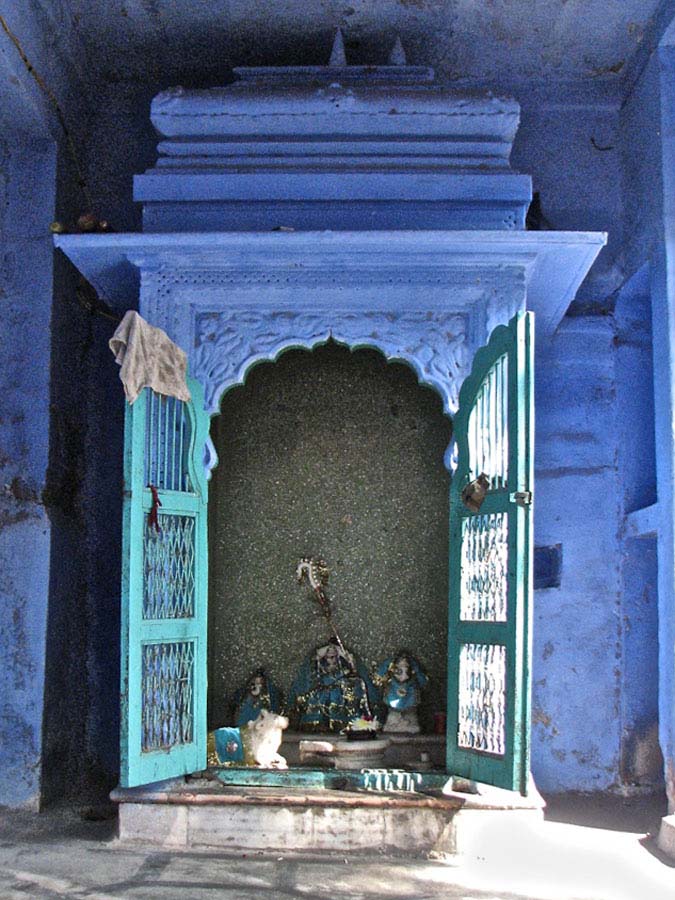
The lanes of old blue town start by the Clock Tower, a major landmark and meeting place surrounded by a lively open market selling food, jewellery and cheap clothes. At the entrance to the lanes there are overly persuasive men selling tea and spices – probably best avoided! The lanes are typical Indian backstreets in a town that gets its fair share of tourists; interesting craft, "antiques" and textile shops are next door to chai stalls, skin whitening clinics, metal and plastic household utensils, engine parts, barbers and shrines to Ganesh, the elephant God.
Jewellers carefully work their gold and silver. During the day the lanes are busy with the carts of fruit sellers, mopeds and the odd camel. Just before dusk everyone slows down and gather to talk, monkeys jump across the lanes from the rooftops or scamper along the telephone wires.

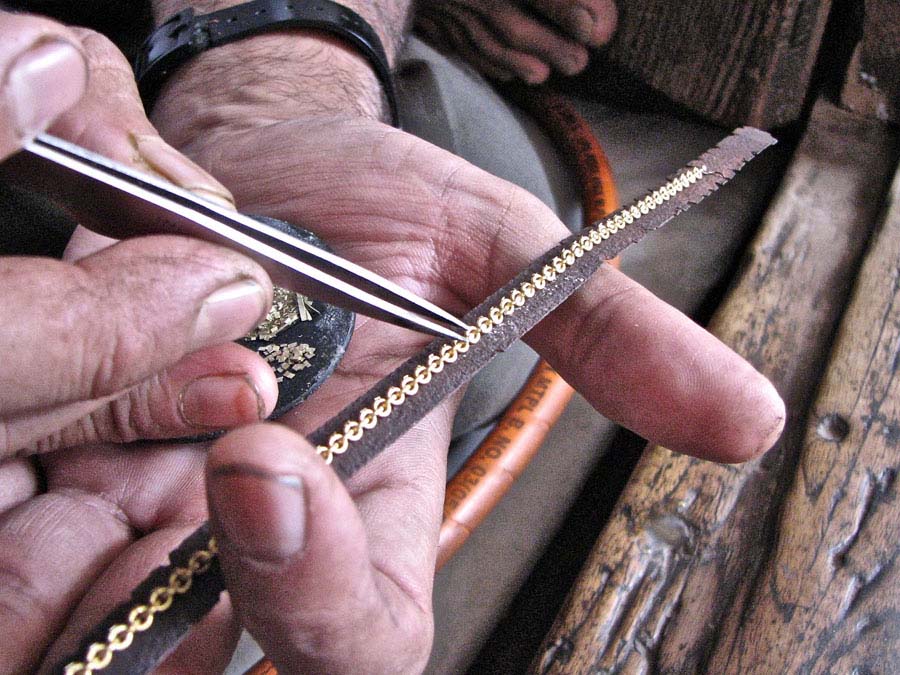
The main tourist attraction is situated on a huge rocky hill above the town, it’s the Mehrangarh Fort, a majestic old fort palace with wonderful courtyards and rooms and a magnificent glimpse of the old life of the Maharajas. It's also a great staging post for your onward journey to the even more enchanting towns of Jaiselmer and Udaipur.
